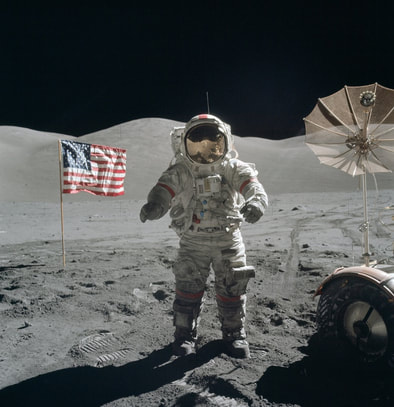Going Back to the Moon (and staying)
|
|
In 1969, two astronauts set foot on the Moon. It was heralded as a milestone in human achievement, proof that scientific advancement can let humans do things that for thousands of years we could only dream of. But today in 2016, the Moon is somehow still out of reach. While a few rovers, and satellites are still sent to the Moon, no one has touched the surface since the last Apollo astronauts in 1972. That was 44 years ago. There are good reasons no one has been back. Soft landings on the Moon are incredibly difficult due to the lack of atmosphere, even harder than a soft landing on Mars. If we wanted to land people back on the Moon, it would require a Saturn V class rocket, which no country makes. For NASA, the Moon was mainly a propaganda tool. When Neil Armstrong landed, the US claimed their victory as the only nation to achieve such a feat. But after that, every successive mission (and Apollo 13 made this very clear to the NASA Administration) risked the death of their crew, after which the public would likely turn on them. Any loss of life would outweigh the little gained by briefly sending more men to the Moon. At the time, there was little evidence that the Moon possessed anything of value for us, and even if there was, the Apollo astronauts could bring little of it back. But today we know there is ice on our Moon.
This makes any kind of settlement attempt much easier because we don't need to bring all our own water (which weighs a ton). And interestingly, that same lunar ice melted into water could be split into hydrogen and oxygen, the main constituents of rocket fuel. The Moon could be a future fuel depot for deeper space travel. |
Our Lunar Space Elevator Infrastructure (LSEI)
|
Concept The natural environment and gravitational phenomena, including the orbital mechanics of the Earth-Moon system, or “cislunar space”, provide opportunities to deploy engineered systems which lower the cost of delivering payloads to locations throughout cislunar space, including the surface of the moon. While the more commonly understood “Earth Elevator” concept, in which cargo ascends and descends a tether anchored to the surface of Earth, has received public and academic attention in years past, the less obvious “Lunar Space Elevator Infrastructure” affords a more near term opportunity to quickly develop initial operating capability with current technology in a more conducive environment. CisLunar Space The area of space between Earth and the Moon is called cislunar space. Gravity and orbital mechanics keep the natural environment of cislunar space predictable. If you place an object in space above the surface of the earth, such that it would fall to the ground if released, and you place another object in space above the surface of the moon, such that it would fall to the lunar surface if released, and you connect the two with a tether, then they will remain stationary when properly balanced. A more sophisticated embodiment of this phenomenon attaches one end of the tether to the surface of the moon, and has the other end of the tether in the balance point of cislunar space, allowing for the transport of material along the length of the tether to and from the surface of the moon and the environment of cislunar space. This is the Lunar Space Elevator Infrastructure, aka LSEI (pronounced “Elsie”). Benefit The overwhelming benefit provided by Lunar Space Elevator Infrastructure is to provide propellantless delivery of cargo to and from the lunar surface from more accessible locations in cislunar space. By using a solar powered “elevator car” to deliver cargo to the surface of the moon, entire spacecraft systems (such as landing gear, descent engines, and propellant) are no longer necessary to conduct mission operations. For example, to deploy a habitat or rover on the surface of the moon, it can be gently lowered to the surface using LSEI rather than lowered with rockets. By the same mechanism, LSEI enables the lifting of lunar regolith from the surface of the moon into space, where it can be chemically processed to provide iron, oxygen and other useful and saleable materials, or it can be mechanically processed to erect large structures otherwise not launchable by current or conceived launch vehicles.Simplified Architecture: A counterweight being pulled toward earth balances the weight of cargo being delivered to and from the surface of the moon. |
|
Functions of the system include:
The design and construction of this system will be executed and funded in the following phases: Phase 0: Conduct trade studies to define baseline architecture and size system elements Phase 1: Conduct initial feasibility demonstrations and pass Preliminary Design Review (PDR) Phase 2: Pass critical design review (CDR) and prove through analysis that system design will function Phase 3: Build, launch, and deploy system For more specific details on the various aspects of this project, please browse our Lunar Space Elevator Infrastructure briefing documents. |



